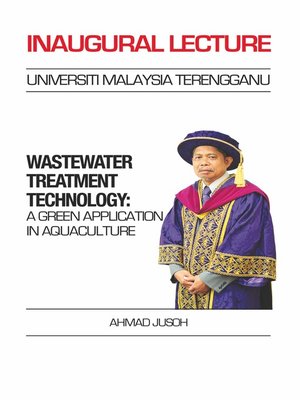Inaugural Prof. Ir. Ahmad Jusoh
ebook ∣ Wastewater Treatment Technology: A Green Application in Aquaculture
By Ahmad Jusoh

Sign up to save your library
With an OverDrive account, you can save your favorite libraries for at-a-glance information about availability. Find out more about OverDrive accounts.
Find this title in Libby, the library reading app by OverDrive.



Search for a digital library with this title
Title found at these libraries:
| Library Name | Distance |
|---|---|
| Loading... |
Nowadays, it is well understood that we must make every possible effort to protect the environment. The most viable and effective approach for that purpose is the utilization of green technology. The main challenge that green technology had to face is the operational quest for sustainability. Sustainability of the green technology means the way of running aquaculture industry that can continue indefinitely into the future without damaging or depleting natural resources. In addition, green technology could reduce the waste and pollution by optimizing patterns of aquaculture production and consumption of the resources. For instance, by facilitating direct water reuse that reduce the use of hazardous chemicals require less non-renewable energy source as well as to remove contaminant. Aquaculture technology could be developed based on alternatives which is based on renewable energy and materials which caused insignificant damage to the health and environment. Among them the most important are physic-chemical, biological, electrochemical and bio-electrochemical technologies. Normally, the aquaculture wastewater is physically treated as it runs through channels or columns of charcoal (activated carbon) and sand filters. The water ends in final sedimentation tank prior to fish tank or discharging to water body. Biological treatment using microorganisms would produce biomass and excess biological sludge simultaneously with the treatment of the wastewater. Thus, the sludge handling and disposal process would also have strong influence on the overall environmental impact. Proper management of the produced biomass is vital for the sustainability of green technology. By proper management, the produced biomass would contribute greatly to the production of biodiesel, pharmaceutical precursors and bio-fertilizers whereas poor management leads to contamination of the environment. Thus, the use of organic coagulant such as Moringa oleifera, biofloc and auto-flocculating microalgae Ankistrodesmus sp. were utilized in the flocculation and biomass harvesting process which is highly potential and energy efficient approach which could spearhead the development of renewable energy in this third world country. This means looking for strategies where water management is combine with energy and nutrient recovery. As a conclusion, engineers could provide the insights for better understanding of the green technology treatment system development which leading towards a sustainable standards of living to protect environment, animal and human health especially in Malaysia.







